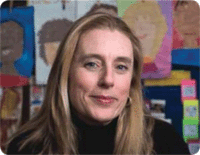Young Voices for the Planet | DVD Trailer
/Repost from: http://www.youngvoicesonclimatechange.com/movie_trailer.php
Young Voices for the Planet is a series of short films featuring young people using science and data to reduce the carbon footprint of their homes, schools, communities, and states. The films present replicable success stories. Young Voices for the Planet allows young voices to be heard and inspires action, the best antidote to fear. These young voices reach our hearts and minds.
This short video shows many young people talking about climate change solutions. There are young people from Team Marine, Green Ambassadors, Surfriders, Girl Scouts, and more.
Teachers: Show this film and discuss some of the points that the young people in the movie bring up.
- Social Responsibility
- Is it okay for humans to destroy the earth?
- Is it okay for one generation to destroy the earth for generations to come?
- Is it okay for people to do nothing?
- Do people have a responsibility to speak out if they see something wrong happening?
- Do animals have rights? Does nature have rights?
- Can we survive without nature?
- Can one person make a difference?
- Can kids make a difference?
- What Bill Love-Anderegg says—Things have to reflect their true costs to everyone? What is the value of ecosystem services?
More: http://www.youngvoicesonclimatechange.com/climate-change-videos.php

